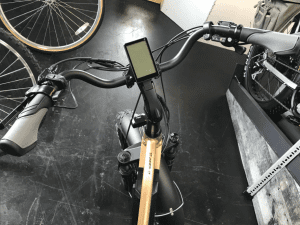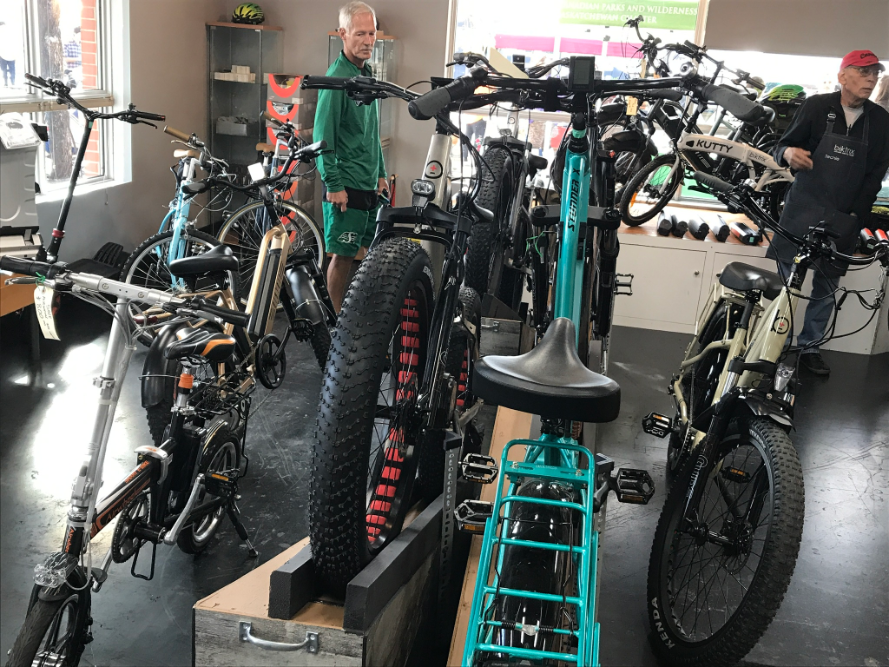Branding: Coordinating My Wardrobe to the HARP Colour Palette
Posted by Dorothy Lander: dorothy@tryhealingarts.ca The talented team at This is Marketing (https://www.thisismarketing.ca/) chose a unique colour palette to illuminate
After our three-day-and-night train ride to Saskatoon and my presentation to my surgical colleagues, we had time to explore this lovely city before our return home to Halifax.
Saskatchewan, home to Canadian Medicare maven Tommy Douglas, boasts more sunshine than any other province, and has the good sense not to move its clocks back and forth. Confusing, though, for us Easterners trying to figure out the time changes as we moved west. A new wind farm near Assiniboia will power 90,000 homes by 2021, eliminating 500,000 tons of carbon from the electricity grid. And the long term care Sherbrooke Community Centre, an Eden Alternative home since 1999, whose every element counters the three major bugaboos that plague elders—loneliness, helplessness and boredom—is also home to a grade 6 classroom. This intergenerational program offers close and continuing contact between school-aged children and the resident elders, enhancing learning and loving intergenerational relationships for all.
I’d never met my host, Francis Christian, a surgeon and poet who runs the only Department of Surgical Humanities either he or I know of. His department chairman, Bolivian Ivar Mendez, is a wonderful sculptor and photographer, as well as being a brilliantly innovative neurosurgeon. He’s hugely supportive of Francis’ initiative to raise awareness among surgeons of how vital the arts and humanities are to our health. Dr. Mendez received the Government of Canada Public Service Award of Excellence for developing remote-presence robotic technology to improve health and healthcare in the Canadian North. This has allowed countless acutely ill children and adults to be treated in their own communities without the need for transport to tertiary care centres. And tele-robotic prenatal ultrasounds are hugely reducing the all too prevalent life-threatening illnesses and deaths among Indigenous women and newborns. Not least, Dr. Mendez’s far-reaching innovations are having massive environmental impact!
Francis had asked me to give ‘Grand Rounds’ (med-speak for a one-hour lecture with power points) on the annual Surgical Humanities Day. When I’d emailed him I’d be coming by train (much pricier than flying), he may have blanched briefly, but he had the good grace to at once praise our carbon-footprint-lightening efforts. His department forked up without a murmur.
On Saturday morning, after a happy hour at the farmer’s market, we found ourselves gazing at a long row of electric bikes parked outside Biktrix, one of the newer entrants into the fast-growing e-bike market—and wholly Canadian-owned and manufactured. www.biktrix.com We were quickly circling the market on a couple of Stunners and ready to put our money down. The bikes arrived at Matthieu Fraser’s Highland Bike Shop on Main Street, Antigonish, three weeks later, where Matt gave us an inch-by-inch tutorial after he’d put them together. www.highlandbike.ca After our first few test runs, Dorothy and I realized I was on an especially steep learning curve. Having not owned, and rarely ridden, a standard bike until my mid-thirties, I was suddenly astride what felt like a bucking bronco. It threatened to take off as soon as I’d seated myself on the saddle—before even touching the pedals. “Oh, it’s just sensing your presence on its back,” Biktrix owner/inventor Roshan Thomas told me casually when I phoned him for a further tutorial.

We took our test ride around the Farmers Market on this Stunner LT in the Saskatoon Biktrix showroom
The Biktrix showroom Saskatoon


Our bikes have eight gears in all, but we quickly figured out these are secondary to the pedal-assist system (PAS), which gives you power only when you’re pedaling. We also have throttles, just like scooters and motorcycles, and of course we wouldn’t have to pedal at all if we relied entirely on the throttle. I think some e-bikes have either one or the other, but we have both.
We soon found out that the smoothest way to start moving is to leave the bike in neutral once you’ve turned on the power. Then you can press gently on the throttle and only switch to pedal-assist level 1 (of 5) once you start pedaling. If you start off from stationary by putting the bike into level 1, you get jerked forward, which we found pretty scary, especially at three-way stops. Again, we found this out only when we asked our mentors if it was okay to start out by using the throttle when still in neutral (“Oh sure, you can certainly do that!”).
Because Dorothy’s been riding pedal bikes since first grade, she’s far more comfy than me, so she continues to ride behind and keep a close on me wherever we go. I’m not sure who is more nervous, but after a few rather scary trips on the busier streets to and from the StFX gym, we’re now just taking short practice runs on the country roads around Clydesdale and Pleasant Valley until I get my e-bike legs. But it’s going to be a while before she lets me out on my own!




Posted by Dorothy Lander: dorothy@tryhealingarts.ca The talented team at This is Marketing (https://www.thisismarketing.ca/) chose a unique colour palette to illuminate


L to R Clockwise: John Graham-Pole aged 2 on Mummy’s knee with sisters Elizabeth, Mary, and Jane, High Bickington, Devon,


Posted by Dorothy Lander Once a month, John Graham-Pole and I showcase the publications of HARP The People’s Press at


Aboriginal Rock Mural Kimberley Region, Western Australia Posted by John Graham-Pole I don’t have answers to any of these questions,
| Cookie | Duration | Description |
|---|---|---|
| cookielawinfo-checkbox-analytics | 11 months | This cookie is set by GDPR Cookie Consent plugin. The cookie is used to store the user consent for the cookies in the category "Analytics". |
| cookielawinfo-checkbox-functional | 11 months | The cookie is set by GDPR cookie consent to record the user consent for the cookies in the category "Functional". |
| cookielawinfo-checkbox-necessary | 11 months | This cookie is set by GDPR Cookie Consent plugin. The cookies is used to store the user consent for the cookies in the category "Necessary". |
| cookielawinfo-checkbox-others | 11 months | This cookie is set by GDPR Cookie Consent plugin. The cookie is used to store the user consent for the cookies in the category "Other. |
| cookielawinfo-checkbox-performance | 11 months | This cookie is set by GDPR Cookie Consent plugin. The cookie is used to store the user consent for the cookies in the category "Performance". |
| viewed_cookie_policy | 11 months | The cookie is set by the GDPR Cookie Consent plugin and is used to store whether or not user has consented to the use of cookies. It does not store any personal data. |